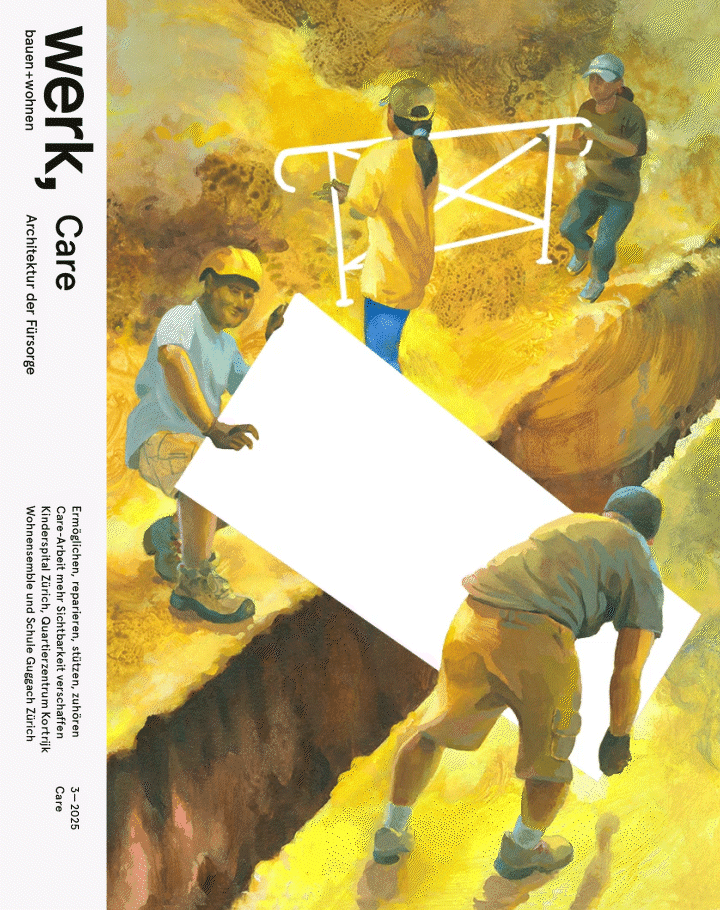werk, bauen + wohnen 3–2025

Who cares?
Light, air and sun—these were the terms used by modernism’s promise of health. Today the demands made by an architecture of healing have become far more complex. This is illustrated by the balancing act achieved by Herzog & de Meuron’s recently completed children’s hospital in Zurich: on the one hand it is an efficient, highly technical health machine, on the other a friendly, short-term residential environment suited to children’s needs. The building cares for the people in it—for the little patients and their families and for the staff who keep the place running day-to-day.
To care for—what does this mean in fact? In 2023 the ETH Zurich set up a Chair for Architecture and Care that concentrates on “domestic ways of life, on alternative care architecture and practices that have the potential to reshape biased social structures". This chair is headed by Catalan architect Anna Puigjaner who is convinced that we all “provide and receive different kinds of care during our lives”. If one takes her definition the term care architecture includes not only the design of hospitals and care facilities. The issue is to broaden our view of how and by whom care is provided nowadays and of the influence that architecture has on it—both positive and negative. Care work is connected to everyday activities such as housework, feeding, or raising children—and this work is still very often done by women, often without pay and often in the privacy of the home. It is “ubiquitous and at the same time invisible.”
This issue invites us to widen our horizons. For once we deliberately shift the focus away from the classic old persons centres or nursing homes. Spaces for care do not have to be exclusive or to separate users into “old” or “young”, “healthy” or “in need of care”. They can be open, accessible places in the middle of society which make it possible to care for each other and for oneself. — Jasmin Kunst